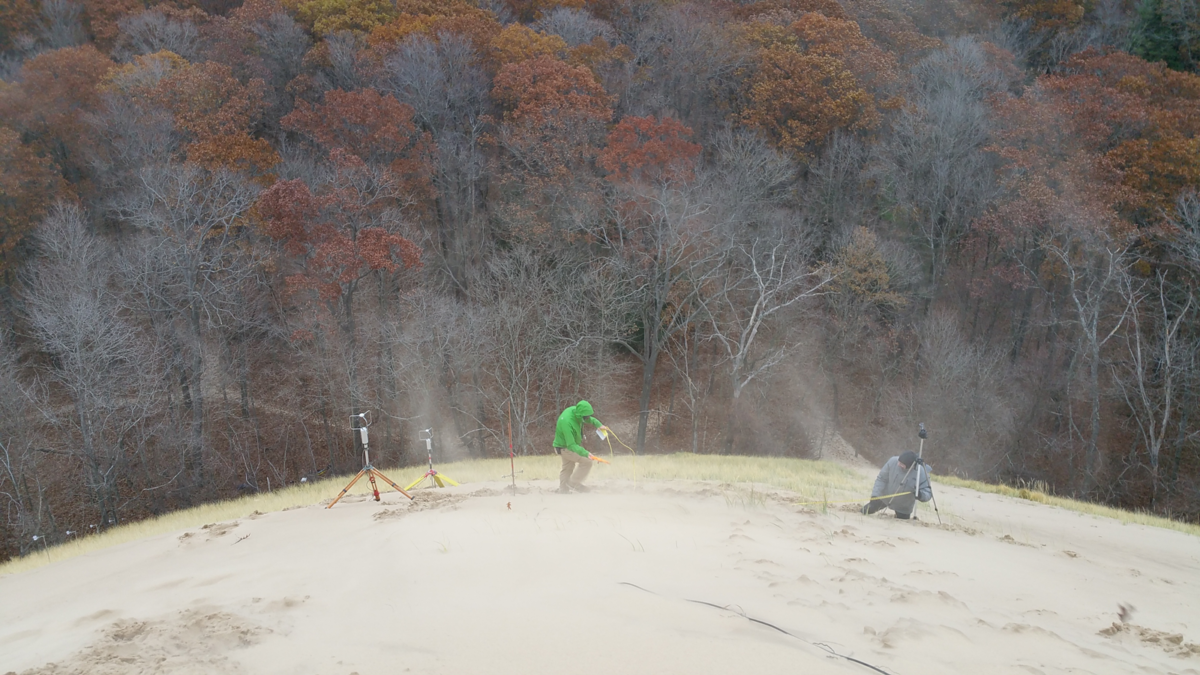Hope College Dune Research Group
When wind blasts dunes on Lake Michigan’s east coast, complicated windflows develop on the side away from the wind — producing turbulent eddies like those around Hope geologist Dr. Edward Hansen (right) and whirlwinds like the one swirling around an ultrasonic anemometer (at left, behind Hope mathematician Dr. Brian Yurk) in fall 2017 on the Green Mountain Beach Dune south of Holland. They raced with geologists Professor Suzanne DeVries-Zimmerman and Dr. Brian Bodenbender to the dune ahead of a storm and braced themselves against heavy winds to place instruments that would collect data for 16 to 20 hours. The anemometers measure 3-D airflow every half-second, capturing movement north to south, east to west, and up and down. Closer to Yurk is a device he created that records individual grains of airborne sand striking microphones. Later, the scientists count the hits. It’s common knowledge that dunes move; Hansen and Yurk think wind currents on a dune’s leeward side contribute more than was previously understood — which could influence dune management strategies. They may be the first scientists to document the phenomenon precisely. After they return twice more to collect additional data, Dr. Thomas Smyth, a colleague at Liverpool Hope University in England, will run it through a computer model he’s constructed, to test whether the model describes what the researchers expect.
For nearly 20 years, the Dune Research Group has focused on West Michigan’s dunes and the eras and conditions under which they’ve moved in the past. Bodenbender’s current dune research involves sediment traps; DeVries-Zimmerman is researching the ecohydrology of a large interdunal wetland in the Saugatuck Harbor Natural Area.

